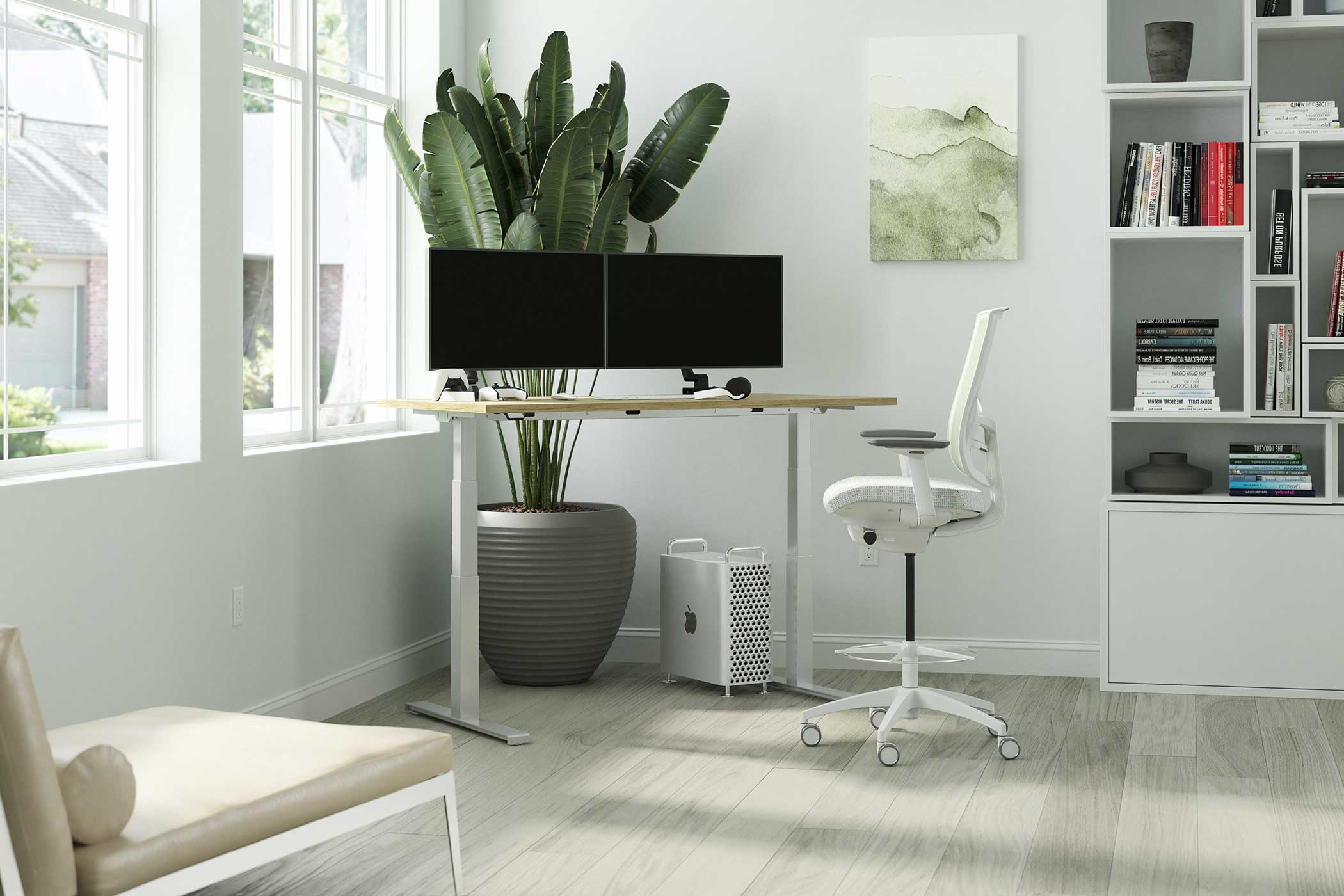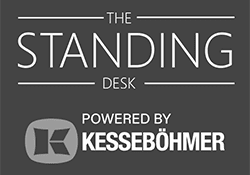Office workers spend at least 8 hours a day working at a desk. At the end of the day, that leaves many nursing aches and pains or general dissatisfactions. However, with an investment of time and effort, and enhanced office furniture choices, any workplace can begin to realize the big impacts of an ergonomic office.
What are some of the advantages of an ergonomic office?
Ergonomics is the study of work. Its main aim is to fit the work tasks to the worker, rather than the other way around. Ergonomics is more than just a matter of picking the right ergonomic desk or keyboard. In the grand scheme, ergonomics is about people, and about improving peoples’ lives by focusing on the physical workplace and the tasks people do there. At its best, workplace ergonomics holds the potential to revolutionize work habits and energize the entire workplace culture with happier, healthier, more efficient workers.
Happier workers
Investments in office ergonomics have been shown to improve workers’ mood and energy level. By committing to help each person work to their best ability, in the healthiest way possible for them, an employer can create a wellness focused workplace culture that spreads throughout the office. Wellness initiatives increase worker satisfaction, and encourage healthier lifestyles beyond the workplace.
Companies that show commitment to worker wellbeing are better able to attract and retain top talent. The increased comfort of ergonomic equipment sends the message that an employer cares about employee health and wellbeing, and treats them with respect. In return, the employees become more committed and engaged.
Healthier workers
Sedentary modern lifestyles are linked to a range of health problems, including obesity, high blood pressure, and neck and back aches. Workstations that are poorly designed only contribute to the increased risk of workplace injuries.
The good news is that a focus on ergonomics in the workplace has been shown to reduce sick days from various injuries, as well as the costs associated with them. According to an OSHA report, an average of 30% of worker’s compensation claims stem from poor ergonomics. Ergonomic equipment that can adjust to fit each person’s body type can best address individual workers’ needs.
Traditional workplace safety programs are often focused on accident prevention. They can go only so far towards reducing the risk of workplace injuries. A large share of workplace injuries can be traced to repetitive strain or musculoskeletal disorders like carpal tunnel syndrome, tendinitis, muscle strains and low back injuries. According to the Bureau of Labor Statistics, these type of ergonomics related injuries account for 30% of absences, and people take longer to recover from them. Injuries that stem from poor ergonomics can be addressed through simple office equipment upgrades – an investment in employee health that also reduces costs from workplace injuries.
Improved efficiency
Ergonomic improvements help reduce the pain that results from unnatural positions like hunching over keyboards or typing with improper form. Working without pain allows people to maintain flow, work without distraction, and reduce error rates. People who are able to work longer in comfort are simply able to get more done. Reduced pain results in higher productivity, greater efficiency, and better ideas overall.

What makes an ergonomic office?
An ergonomic office is created by reducing repetitive activities, adjusting unnatural work positions, and addressing uncomfortable environmental conditions.
Creating an ergonomic office is an evolving practice that relies on:
- furniture and device design
- office design and layout
- awareness of the activities that workers perform
- adjustability to fit individual bodies and abilities
- other aspects of the office environment like lighting and temperature
Ergonomic office furniture
When we think of an ergonomic office, we most often think of ergonomic office chairs or ergonomic standing desks. Ergonomic office furniture is specifically designed to support good posture and employee comfort. Ergonomic furniture is almost always adjustable to fit a range of body sizes.
Office environment
Other aspects of the office environment can be adjusted to enhance worker comfort. Lighting, temperature adjustment, and air quality are a few factors that can often be improved to make work tasks more comfortable.
Reduction of repetitive motions
An ergonomic workstation should be designed to reduce repetitive and unnatural motions as much as possible. Arranging the workstation to make sure the most frequently used items are within easy reach is one way to reduce strain over time.
Other office equipment
Accessories like document holders, balance balls, keyboard trays, and ergonomic keyboards can help support natural postures and healthier work habits.
How Can I Create a More Ergonomic Office?
There are a number of ways to create a more ergonomic office environment:
- Prioritize and invest in ergonomic office equipment like height adjustable standing desks.
- Perform an ergonomic study to review tasks that workers perform and how their comfort is affected. Then adjust equipment to maximize benefit for the tasks that workers perform.
- Implement a program that trains workers on correct postures for sitting and standing, how to arrange the workstation to minimize reaching, ergonomic best practices for using the keyboard and mouse, proper task lighting, monitor positioning, and other aspects of an ergonomic workstation.
- Adjust your office environment to enhance ergonomics. High ventilation rates help lower pollutants and CO2 concentration, which in turn can improve productivity. Lighting and temperature control can also be dialed in to increase workers’ comfort.
- Design an office layout to that encourages employees to get up and move around throughout the day. Common spaces like breakout spaces, meeting rooms, and common lounge areas can help inspire movement and healthier habits.
Should a Home Office Be an Ergonomic Office?
With more and more people working from home at least part time, there’s no doubt that an ergonomic home office can contribute to wellbeing and productivity. In fact, it’s even easier to make an impact in a home office by simply finding a high quality standing desk that fits your purpose.
Creating a more ergonomic office is not an “all or nothing” goal. Any ergonomic improvement can be an achievement that enhances employee wellbeing, health, and productivity.







